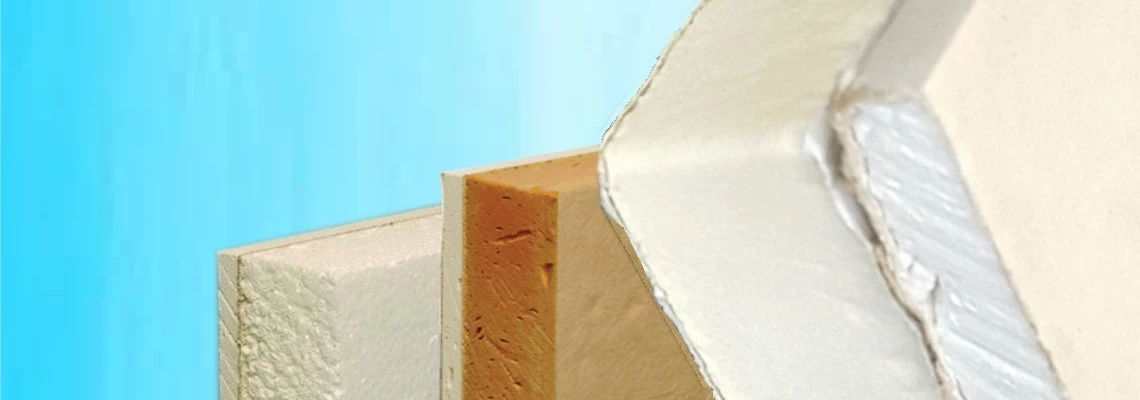
Energy saver insulation.
How to improve thermal insulation levels in your home?*
About 16% to 25% of heat in the home escapes through walls.
Heat escaping through each wall will have a direct impact on the price of your home heating bills - if high levels of heat are in fact escaping through each wall in your home, you’ll be pumping more and more heat into the building to no real effect!
Insulating your home wall is a great way to bring down the price of your heating bills.
There are a number of different types of energy savers insulations, all of them stop heat leaving through each wall in your home, but not all of them perform as good as thermal insulated plasterboard.
This great time-saver offers you assurance that your insulation is going to stay in place.
It is a cheaper solution than buying both constituent parts. Insulated plasterboard is incredibly popular due to installation time and cost.
Thermal plasterboard consists sheet of standard gypsum board pre-bonded to insulating material sandwiched together into a single sheet.
It can be fixed with plasterboard screws or even adhesive, making it an easier option.
The ability to install quickly is a huge advantage. This 2 in 1 product brings a whole host of benefits to your home. Starting from low labour costs to low heating bills. Future costs will be kept down due to the energy efficiency of Thermal Plasterboard.
Due to the thermal resistance, your home will be kept cool in the warm summer months and warm during the cold winter months.
Insulation material that sits under the plasterboard - between the plasterboard sheet and the wall of your home, is something that you can choose from.
PIR core vs Phenolic core vs EPS core
There are many different types of insulation laminated to plasterboard. This combination product offers either PIR core, Phenolic foam core or EPS (polystyrene) core.
Depending on the design, you can choose from various types of insulation setups. All of therm are available in a variety of sizes and thicknesses.
This is a high grade, phenolic foam three-in-one product for internal wall insulation used as mechanically fixed and adhesively bonded 'dot and dab' insulated plasterboard.
Suitable for internal walls, roofs, ceilings.
Kingspan Kooltherm K118 Insulated Plasterboard
Xtratherm Safe-R SR/TB Thermal Liner
Xtratherm Safe-R SR/TB-MF Thermal Liner
This is composite insulated board of polyisocyanurate (PIR) rigid insulation foam core bonded to 9.5mm or 12.5mm tapered edge plasterboard.
Suitable for internal walls, sloped roofs and ceilings.
Xtratherm XT/TL Insulated Plasterboard Thermal Liner
Xtratherm XT/TL-MR Insulated Plasterboard Moisture Resistant Thermal Liner
Celotex PL4000 Insulated Plasterboard PIR Thermal Laminate
Basic, low grade expanded polystyrene foam insulation bonded to plasterboard.
This type of plasterboard is normally made up of 9.5mm gypsum board, backed with a sheet of expanded polystyrene. The thickness of the insulating sheet can vary between 12mm and 30mm, depending on the insulation level needed.
Can be used to line the walls of internal rooms for both new build and refurbishment projects.
Gyproc Therma-Line Basic Insulated Plasterboard British Gypsum
Knauf EPS Thermal Laminate Insulated Board
If you are looking to add extra strenght to your wall you should consider Ply-deck OSB bonded insulation. This is a three-in-one solution designed to provide high levels of thermal insulation in one easy applicable product.
Ply-Deck Xtratherm PIR with OSB Board
All you need to do is to make sure you’re getting the right insulation variety to ensure that you’re upping your home insulation as much as possible!
If you’re looking to protect the environment by improving your energy consumption and - in the process - bring down the price of your home energy bills, consider installing plasterboard on each wall of your home.
*All the information provided in the content published on Insulationgo blog is for informational and educational purposes only. Insulationgo LTD makes every effort to ensure the accuracy and timeliness of the content, but we do not assume any responsibility for any errors or omissions.
The information presented on this blog should not be considered as professional advice or a substitute for consulting relevant experts. Before making any purchase decisions or taking action based on the information presented here, it is strongly recommended to contact the product manufacturer directly to verify the details and ensure its suitability for your specific needs.
By using this blog, you acknowledge and agree that Insulationgo LTD shall not be held liable for any damages, losses, or inconveniences arising from the use or reliance on the information provided herein. This limitation of liability applies to all users of the blog, including but not limited to visitors, readers, and subscribers.










































































































